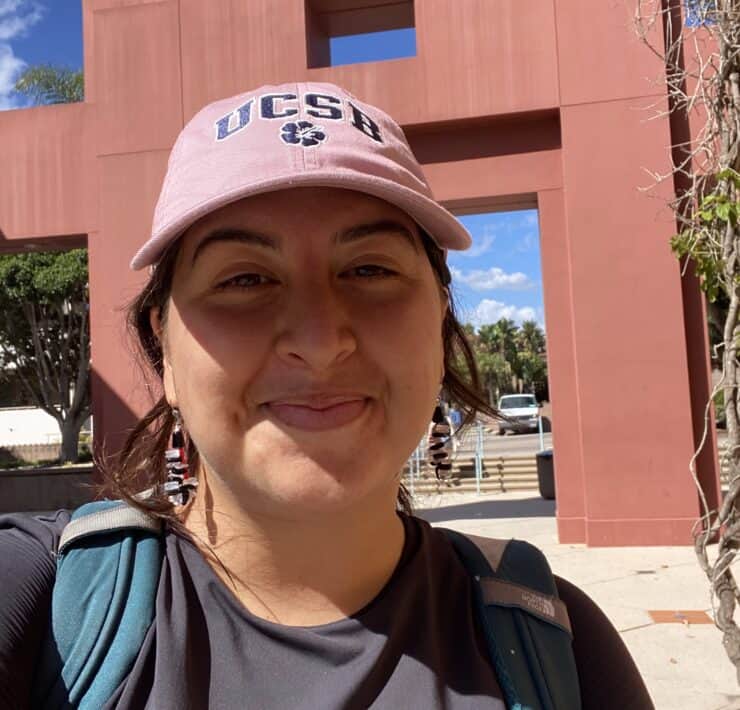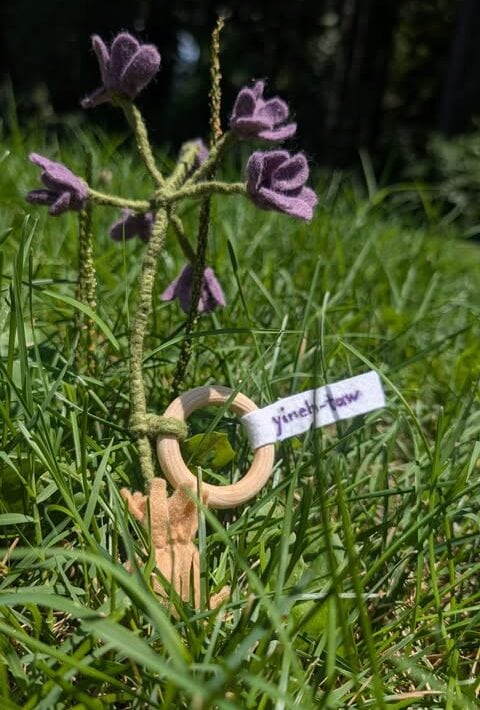
My not-so-little sister stood packing her bags for her final year at UC Davis. I followed her gaze to the cupboard as she asked me, “Hey, are those acorns up for grabs?” Indirect, comedic Cecilia rarely asks for anything outright. I winced, “Sorry, those are like ten years old. But I can make you some – right now!”
Acorns are not a part of our family’s main diet. But they used to be, dahungwho dung din din dung dóng… We are k’iwinya’n-ya:n – acorn eaters. This food was so central to our traditional way of life that it was the basis for how we defined ourselves – our word for human beings. My Uncle Phillip, my dad’s uncle, remembers collecting acorns as a boy, from a grove near their house that’s no longer there. “[Our mom] would put us to work cracking and grinding, just about every day.” He leaned over, a little embarrassed, “But I’ve got to say, I never did care for the taste.”
In our house, there’s usually acorns sitting around drying, in those net bags you buy oranges in. Typically, we will only process acorns when we are preparing for a ceremony or have a very special occasion. So when my sister asked me for acorns, it was a little bit out of the ordinary. And just this once, I was part-way through the process, with a few cups of pre-ground flour. All we had to do was leach and cook them. Since she was leaving in a few days, we had time. I set about getting to work.
There’s all kinds of ways to make acorn soup now, but you can’t just look it up in a recipe book. An exception might be Sara Calvosa Olson’s Chími Nu’am: Native California Foodways for the Contemporary Kitchen, a fabulous new culinary exploration surrounding traditional foods, including acorns. Most instructions are shared orally, within families, ceremonies, and cultural demonstrations. I keep a running list of anything I learn. The main thing is to gather the acorns and dry them, then crack, grind, leach, and cook them. This is referred to as ‘processing’ acorns. Necessity being the mother of invention, there’s endless variety in carrying out each of these steps. Recently, I heard that briefly freezing acorns, while still in their shells, can help kill any bugs that might be hiding inside. This can also be done through cultural burning, which is the way our people traditionally ensured high yields of good acorns. There are many varieties to choose from, but up here, we eat Tan Oak acorns. We consider them to be the sweetest and best-tasting. Maybe it’s just personal preference. Another golden rule is to leach and cook the acorns with spring water, rather than tap water which leaves a slightly metallic taste. An elder with an astute palette can tell which spring the water came from, just by tasting the soup. There is certainly pressure in cooking for others, you want it to taste nice. But through all my inevitably imperfect batches, people have been extremely kind. So I think it’s always good to give it a try.

I brought out my leftover acorn flour, ground a little more finely than the last time. In a colander, I spread flat two tea towels and poured in my roughly three cups of flour. I turned on the faucet (our water comes from a spring!!) and let the water fill to about an inch below the rim. Then I set it on a drip and went to clean up my workspace. When I had time, I let the water drain nearly all the way, and then switched to a pour-over method. For this, pour in several cups, then wait until the top of the acorns begins to emerge. Repeat as many times as you like, but never leave the acorns drained completely. Once they are drained, they must be cooked promptly, or preserved in the freezer. In total, we spent three days leaching these acorns. That’s kind of overkill for this amount of flour, but the longer the leaching, the sweeter they become. I like to spoon a little out from time to time and taste for bitterness. They were good! Deciding to cook them the next day, we set them in the freezer.

This is when things started to go a little off path. We got busy and weren’t able to cook the acorns before we left. So, we packed the frozen block with us to Davis. It was hot when we left, it was hotter when we arrived. The acorns were thawing, and we knew if we didn’t get to Davis in time, we’d run the risk of letting them spoil. Luck was on our side I guess. We opened up the cooler and found them still mostly frozen. It was time to cook. I slid the icy block into the pot and turned the stove to medium heat. I’d wait until it thawed a bit, and then add some water. The water! We didn’t have spring water here. You can buy it, but it’s not the same as from home. My sister went to the store and brought back some jugs of spring water. I’ve been told to add hot water to acorns, so we heated up about seven cups of water and let that simmer. I turned back to my chaotic block of frozen acorns. It was kind of like cooking pancakes. We’d let the ice block sit, then we’d turn it over and scrape off the thawed k’itust – leached acorns. Slowly, our mess began to resemble soup.
Cup by cup, we added half the hot water, stirring to incorporate. I was told to keep adding water until it stops getting thicker, then add more until you reach your desired consistency. But if you add too much, it’ll get too thin, and you can’t reverse it. The portions are never going to be exactly the same, so you really just have to eye it. It would definitely be easier if I did this more often. Miraculously, the acorns thickened, began to thin, and I added three more cups of water. This produced plenty of acorns, about four mason jars full. That should feed her craving for at least the first quarter of school. After all my worries, these turned out to be my best acorns yet. Sweet and fluffy!
I really applaud my sister for taking the initiative to ask. I hope these acorns will give her lots of energy, protein, and healthy fats to help her study and generally be well at school. Acorns are a superfood. They’re also a slowfood. You can’t purchase them at the supermarket. But that doesn’t mean they’re not available. It just takes so much work to pause your life and complete each step of the process. And that is part of the beauty of acorns today. When I gather acorns, it’s always with family. We visit tan oak groves that have provided our family with acorns for centuries. One year, the container I chose to store my acorns was a tad too airtight, and all the acorns sprouted. Inedible, but maybe good for growing new trees. The cracking and grinding, it’s all very hands-on and repetitive. There’s something meditative in that, satisfying to all ages. What I remember from my childhood is sitting by the woodstove in winter, cracking last year’s acorns with my siblings while my dad told us stories. You can’t buy that at the grocery store. Acorns are good for you, they’re delicious, but more than that, this practice recenters and reaffirms who we are – acorn eaters.









